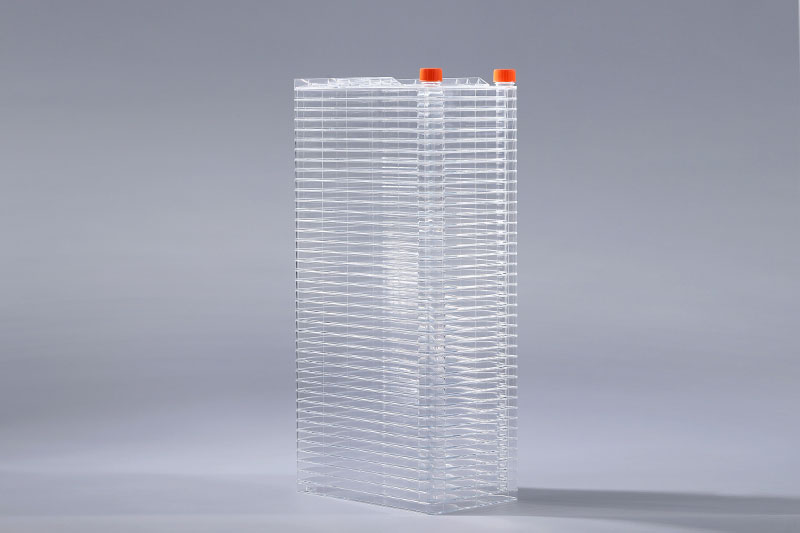Cell factories play an important role in large-scale cell culture. At present, the common specifications of cell factories are 1, 2, 5, 10, 40, etc. The culture area corresponding to different layers is also different, so different How many cells can be inoculated in a cell factory of the specifications?
Because of the different growth characteristics of each type of cell and the requirements for inoculation density and environment, it is impossible to generalize how many cells can be inoculated with each size of cell factory. Cell seeding density refers to the density of live cells seeded, which affects cell growth and survival to a large extent. When the inoculation concentration is low, the cell growth and reproduction are slower, and the final cell yield is also low, especially for adherent animal cells. When the inoculation concentration is low to a certain critical value, the cells will not even expand on the medium surface. Different cell lines have different appropriate cell seeding densities.
It is generally recommended that researchers can inoculate the number of cells per unit area of the cell factory, multiply it by the used cell factory culture area, and divide by the inoculation ratio of the cultured cells. Too high or too low cell inoculation amount is not conducive to cell reproduction. A proper cell inoculation amount is a prerequisite to ensure the normal growth of cells.
The cell factory uses a multi-layer stacked structure to realize a large area of cell culture in a compact space. Compared with cell culture flasks, the number of cell inoculation has been expanded, and its role in large-scale cell culture has become increasingly prominent.
The FAI climbed 5.9 percent year-on-year in the first 11 months of 2018, quickening from the 5.7-percent growth in Jan-Oct, the National Bureau of Statistics (NBS) said Friday in an online statement.
The key indicator of investment, dubbed a major growth driver, hit the bottom in August and has since started to rebound steadily.
In the face of emerging economic challenges home and abroad, China has stepped up efforts to stabilize investment, in particular rolling out measures to motivate private investors and channel funds into infrastructure.
Friday's data showed private investment, accounting for more than 60 percent of the total FAI, expanded by a brisk 8.7 percent.
NBS spokesperson Mao Shengyong said funds into weak economic links registered rapid increases as investment in environmental protection and agriculture jumped 42 percent and 12.5 percent respectively, much faster than the average.
In breakdown, investment in high-tech and equipment manufacturing remained vigorous with 16.1-percent and 11.6-percent increases respectively in the first 11 months. Infrastructure investment gained 3.7 percent, staying flat. Investment in property development rose 9.7 percent, also unchanged.
 English
English



















































